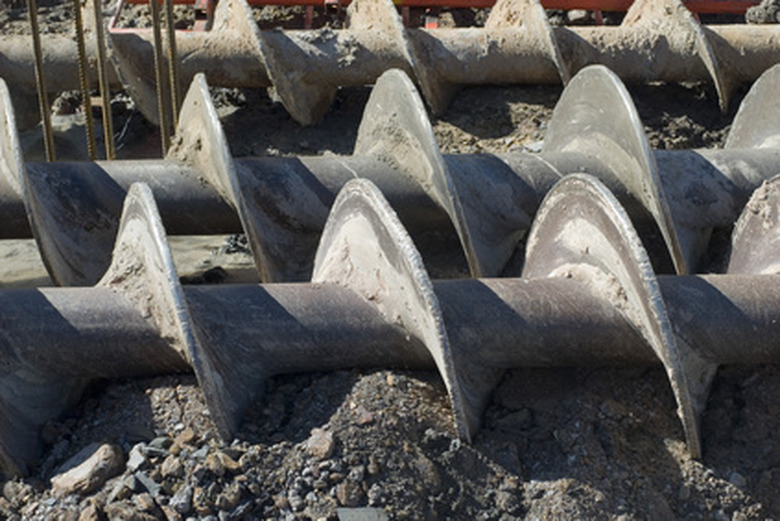How To Calculate The Volume Of An Auger
Know precisely the size of hole an auger creates by determining its blade volume. Auger blades resemble a long corkscrew made of metal. The sides of the corkscrew are sharp to allow the auger to easily burrow through tough soil. A spinning auger blade has the shape of a cylinder and therefore creates cylindrical-shaped holes. The volume of the auger blade depends on its length as well as its radius. The radius of a cylinder measures the distance from its central axis to its edge.
Step 1
Slip on a pair of heavy work gloves to make sure you don't cut yourself on the auger blade.
Step 2
Measure the length of the auger blade in inches. For example, the blade might be 30.0 inches long.
Step 3
Determine the radius of the auger blade with a tape measure. Assume a radius of 3.0 inches for the sample exercise.
Step 4
Multiply the number pi times the square of the radius times the length to obtain the volume of the auger blade in cubic inches. This volume also equals the size of the hole the auger creates. Pi can be rounded to 3.14. Performing this step leads to 3.14 times 3.0 inches times 3.0 inches times 30.0 inches, or 847.8 cubic inches.
Things Needed
- Work gloves
- Tape measure
- Calculator
Cite This Article
MLA
Hirsch, William. "How To Calculate The Volume Of An Auger" sciencing.com, https://www.sciencing.com/calculate-volume-auger-7822108/. 24 April 2017.
APA
Hirsch, William. (2017, April 24). How To Calculate The Volume Of An Auger. sciencing.com. Retrieved from https://www.sciencing.com/calculate-volume-auger-7822108/
Chicago
Hirsch, William. How To Calculate The Volume Of An Auger last modified March 24, 2022. https://www.sciencing.com/calculate-volume-auger-7822108/
